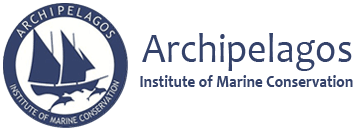Miliou, A., Demetriou, M., Caprio, C., Tsimpidis, T., Barnicoat, S. Boat Traffic Characteristics in Three Passages of the Aegean Sea: Evidence, Risk of Maritime Accidents, Strategy for Protection. World Universities Congress 2011.
Abstract:
Boat traffic characteristics, in three main passages in the Greek part of the Aegean Sea and neighbouring international waters, were assessed between November 2009 and April 2010. Data on fleet characteristics (vessel type, size flag, hazardous substances carried and speed) passing through these passages were collected on a 24-hour basis using the Mariweb system. Dense ship traffic was found in all three areas, along with a lack of traffic lanes and routes. In the three passages a total of 7568 vessels were recorded, out of which 65% were cargo boats, 32.3% were tankers and 0.3% were passenger vessels. Out of the total recorded fleet, 50% flew “flags of convenience”. Shipping positions demonstrated odd and erratic movements. These are happening in precarious maritime conditions, where there are sensitive sea areas rich in biodiversity, endangered species and protected habitats. The areas studied represent three passages of different traffic frequencies, and most likely reflect shipping conditions in other parts of the Aegean. The lack of efficient mechanisms in place to manage, monitor and regulate ship traffic conditions is exacerbated by the fact that there is no established collaboration – plan of action – between Greece and Turkey to deal with potential maritime accidents, which could result in an ecological or socio-economical disaster for both countries. The Aegean Sea could be protected through designation from the International Maritime Organization (IMO) as a Particularly Sensitive Sea Area (PSSA) with navigation and monitoring measures to be applied. Universities in Greece and Turkey, as well as in other countries, can work together to undertake risk assessments, scientific studies, develop proposals for protection and highlight scientific and conservation reasons for protecting the Aegean Sea. A joint collaboration could promote PSSA designation and protective measures for the whole Aegean Sea.


